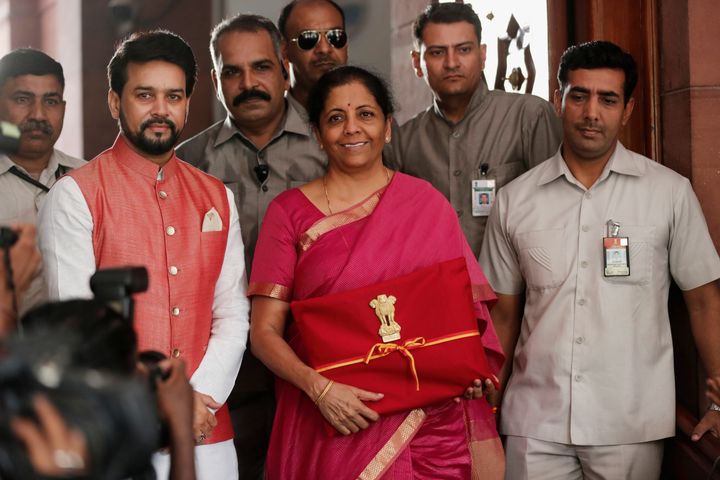
Union Minister Nirmala Sitharaman will present the annual budget on Saturday in the Parliament at 11 am. This year’s budget, which is only a state of accounts of the Union government in a routine year, comes at a time of slowdown in the economy. Both businesses and consumers have expectations from the government since private investment and consumption demand have plunged drastically.
Economists appear divided about how the Narendra Modi government should address this situation. A section of economists believe that the government must not worry about increasing the fiscal deficit and scale up the extent of public expenditure to transfer money directly in the hands of people so that consumption demand increases. In an interview to HuffPost India, senior economist Sudipto Mundle advised an increase in public spending. The other section of economists holds the belief that structural factors must be addressed to fix the economy. Former member of the Prime Minister’s Economic Advisory Council Rathin Roy explained this perspective in an interview to Huffpost India.
The Economic Survey, tabled in the Parliament on Friday, projected India’s economic growth at 6-6.5% in the forthcoming financial year (2020-21) starting April 1. The government estimated GDP will grow 5% this fiscal year (2019-20), which ends on March 31. That would be the slowest growth since the global financial crisis of 2008-09.
Prime Minister Narendra Modi said that the Economic Survey focuses on wealth-creation and outlines a multi-faceted strategy to achieve a $5 trillion economy through enterprise, exports, ease of doing business and more
When asked if there is any change in meeting $5 trillion target by 2024-25, Subramanian said, according to PTI, “To the best of my knowledge, there is no change in deadline.”
However, the target of a $5 trillion economy will take longer than expected by the government, Business Today pointed out. For India to get to the $5 trillion mark, it needed to grow at 11-12% nominal rate for the next five-years. Central Statistical Office (CSO) said in its first advanced estimate released in January that the nominal GDP growth, which includes rate of inflation, is expected to fall to 7.5% in financial year 2019-20, as Hindustan Times pointed out.
In the budget, Sitharaman is expected to announce a host of economy-reviving measures. Income tax cuts, higher spending on infrastructure and incentives for real estate are likely, according to Reuters.
Reuters quoted government sources as saying that Sitharaman is expected to announce a plan in the budget to invest $1.48 trillion in infrastructure over the next five years.
The government, according to Reuters, plans to increase import duties on more than 50 items including electronics, electrical goods, chemicals and handicrafts. The announcement is likely in the budget.
Some analysts have also predicted changes in tax. Bank of America told The Hindu Business Line that cuts to personal income taxes, long-term capital gains and tax on share buybacks could help increase demand.
Corporate India is expecting measures from the government which will boost consumption demand, according to Firstpost, since it has plunged drastically over the past year. The consequence of that has been drastic reduction in sales. The automobile sector is the best known example of this.
(With Reuters and PTI inputs)
For the latest news and more, follow HuffPost India on Twitter, Facebook, and subscribe to our newsletter.